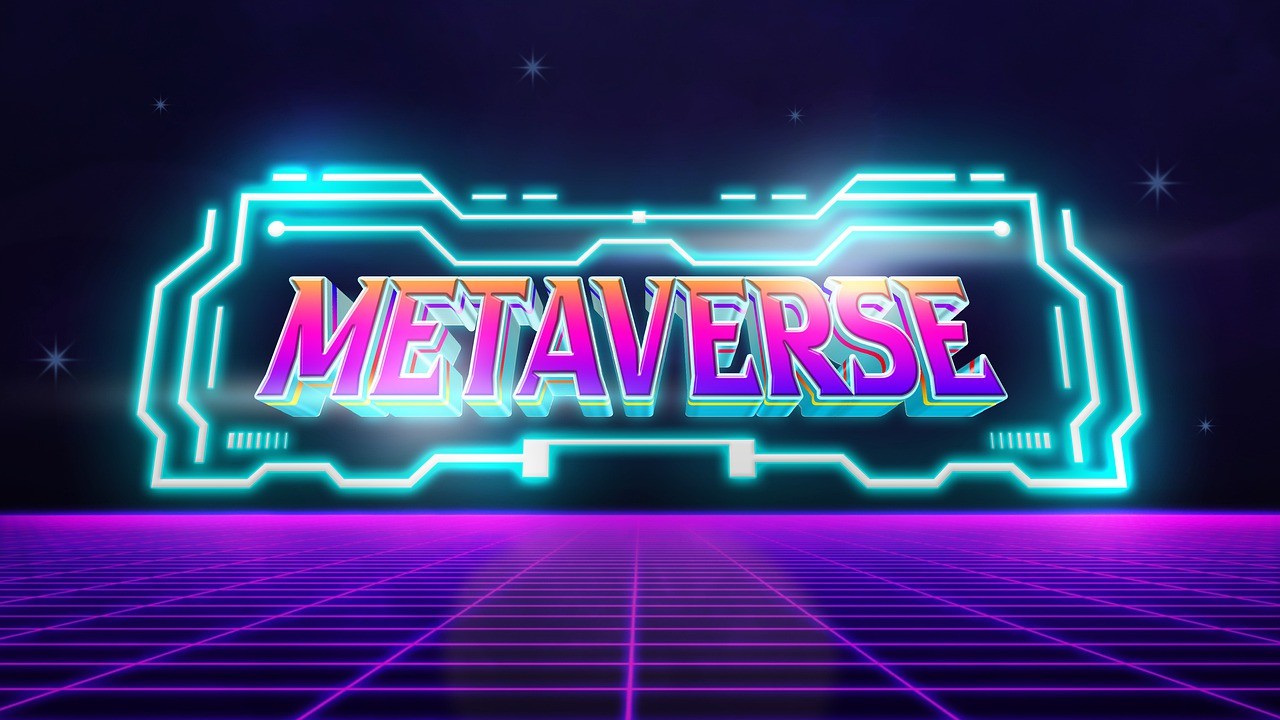TECHNOLOGY
The Metaverse: Myths and Facts

Any new technology involves a certain amount of ambiguity and myths.
In the case of the Metaverse, however, many of the myths have been exaggerated and facts were misrepresented, while the Metaverse vision will take years to mature fully, the building blocks to begin this process are already in place. Key hardware and software are either available today or under development; and definitely stakeholders need to address Safety, Security and Privacy (SSP) concerns, and collaborate to implement open standards that will make the Metaverse safe, secure, reliable and interoperable, and allow the delivery of secured and safe services as seamlessly as possible.
Despite the buzz about the Metaverse, many still don’t completely understand it. For some, it is the future, while others think it is gimmicky. For now, the Metaverse is an interface or a platform that allows digital realities of people to come together to work, play and collaborate. Metaverse hopes to transcend geographical boundaries and become the next ‘thing’. That said, there are plenty of misconceptions about the Metaverse, and here are a few:
Myth #1: No Knows What is the Metaverse
In recent months, it has become clear that there is no single definition of the Metaverse.Well-known experts refer to it as “the internet of the future” or point to immersive devices to demonstrate various platforms and user experiences.
In simple terms, the Metaverse is the future of the internet: A massively scaled, interactive and interoperable real-time platform comprising interconnected virtual worlds where people can socialize, collaborate, transact, play and create. There are 5 billion internet users in the world and crypto has emerged as both the infrastructure layer and the zeitgeist that will fill in the blanks: digital currency, fully functioning digital economies, ownership of digital goods and true interoperability across countless interconnected systems, all this defines the Metaverse [3].
Myth #2 The Metaverse is Only Gaming
The Metaverse is not gaming. Gaming is an activity you can do within the Metaverse, there are 3 billion gamers in the world. Today, when people talk about the Metaverse, they often describe gaming platforms like Roblox, and Minecraft as examples. While gaming remains one of the leading experiences, consumers are increasingly looking for entertainment and shopping in the virtual world. One in five Metaverse users has attended virtual live events such as concerts and film festivals. [4]
Myth #3 The Metaverse is Only Virtual Reality
Saying the Metaverse is virtual reality (VR) is like saying that the internet is only your smartphone, it’s a way of interfacing with the internet. In the same way, you can imagine experiencing the Metaverse through VR, but you can also imagine experiencing the Metaverse through your laptop or desktop. [4]

Myth #4 The Metaverse Will Replace the Real World
No, this is not the “Matrix”, the Metaverse won’t replace the real world. It will be additive to the real world, an expansive virtual environment where you can do any number of different things: work, socialize, play, create, explore and more.
Myth #5 The Metaverse is a Fad
The Metaverse is a fad in the same way the internet considered as a fad at some point of time. We’re still years away from a fully realized Metaverse and the technology we’ll need is far from complete. But even today, we’re already living in a very primitive version: we work remotely, we socialize and learn virtually and we find entertainment without leaving our homes. However, as always, how we meet those needs will continue to evolve as our technology advances.
Myth #6 The Metaverse Will Be a Monopoly
Companies like Meta and Microsoft are two of the world’s most valuable companies because they’re perceptive. They have a skill for skating to where the puck will be and they’re able to scale fast. But jumping on the bandwagon early doesn’t mean they’ll control the Metaverse, the field is to big to be controlled by handful companies.
Myth #7 The Speed of Technology Will Set the Pace for Adoption
Many people believe that the broad adoption of the Metaverse is hindered because technology is not keeping pace. There remains low penetration of immersive devices among consumers, and there are infrastructure barriers in the way of a truly scaled, immersive Metaverse future. Close to one-third of Metaverse users see technology as severely limiting their dream experience.
VR is the most accessible technology at just 20 percent penetration, yet the adoption curve to date follows the trajectory of other technologies that became widely available over time. Penetration for recent breakthroughs such as smartphones, tablets, and social media grew from 20 percent to 50 percent in only a handful of years. Lower cost, increasing content, and improved usability are driving adoption.
Myth #8 The Metaverse is Already Here
The Metaverse is an infinitely large (future) virtual world that connects all other virtual sub-worlds. You can see the Metaverse as the next phase of the internet as we know it: the currently two-dimensional, flat Internet will be changing into a three-dimensional, spatial form. We are moving from the web of pages to the web of coordinates. And from the web of information to the web of activities. In the future, people can meet as avatars in the Metaverse, to get to know each other for example, to network, provide services, collaborate, relax, game, shop and consume. The Metaverse also offers the opportunity to build, create and participate in a virtual economy. In the future, we won’t be going “on” the Internet, but “in” the spatial Internet. The Metaverse can be seen as the world that connects all (existing) virtual worlds. That world, however, isn’t here yet, the Metaverse is still a thing of the future.
Myth #9 The Metaverse is Inevitable
It is clear that the Metaverse is actively being developed. The key players in the world of technology have their eyes on it. But they are facing a number of challenges; interoperability for example – where users must be able to move easily between different worlds – being one of them. This means that companies must work intensively on open standards. In the Metaverse, you have to be able to work, attend concerts and play games with the greatest of ease. Not such an easy feat, particularly because many companies will be reluctant to collaborate on open standards and give up their intellectual property. In addition, the growth of the Metaverse will also require substantial hardware innovations.
Myth #10 The Metaverse is Suitable for Everything
This is another aspect that remains to be seen. In the future, the different variants of the internet will simply coexist – just as you sometimes read a book on paper, and sometimes on your screen. The internet as we know it will continue to exist. It will be accessible on your smartphone, computer or tablet. For some things such as shopping, playing games, and social interaction, the #metaverse will be extremely suitable.
What is The Future of the Metaverse?

The Metaverse “is bringing together people, processes, data, and things (real and virtual) to make networked connections more relevant and valuable than ever before-turning information into actions that create new capabilities, richer experiences, and unprecedented economic opportunity for businesses, individuals, and countries”. In simple terms, the Metaverse is the intelligent connection of people, processes, data, and things. It describes a world where billions of objects have sensors to detect, measure, and assess their status, all connected over public or private networks using standard and proprietary protocols.
Data is embedded in everything we do; every business needs its flavor of data strategy, which requires comprehensive data leadership. The Metaverse will create tens of millions of new objects and sensors, all generating real-time data which will add more value to their products and services for all the companies who will use Metaverse as another avenue of business. As a result, enterprises will make extensive use of Metaverse technology. As a result, there will be a wide range of products sold into various markets, vertical and horizontal, an endless list of products and services.
For example, in e-commerce, the Metaverse provides a whole new revenue stream for digital goods in a synchronous way instead of the current traditional 2D way of clicking and buying. In human resources (HR), significant training resources will be done with virtual reality (VR) and augmented reality (AR) that are overlaying instructions in a real-world environment and giving somebody a step-by-step playbook on how to put a complex machine together or run a device or try a new product all will be done with virtual objects at the heart of the Metaverse. While in sales/marketing, connecting with customers virtually and sharing the virtual experience of the product or service will be common similar to our virtual meetings during the past two years in the middle of Covid, but the Metaverse will make it more real and more productive.
Finally, similarly to Cloud Computing, we will have Private-Metaverse, Hybrid-Metaverse, and Public-Metaverse with all possible applications and services in each type. Companies will benefit from all options based on their capabilities and needs. The main goal here is to reach Metaverse as a Service (MaaS) and add a label of “Metaverse Certified “on products and services.

Source link
TECHNOLOGY
Next-gen chips, Amazon Q, and speedy S3

AWS re:Invent, which has been taking place from November 27 and runs to December 1, has had its usual plethora of announcements: a total of 21 at time of print.
Perhaps not surprisingly, given the huge potential impact of generative AI – ChatGPT officially turns one year old today – a lot of focus has been on the AI side for AWS’ announcements, including a major partnership inked with NVIDIA across infrastructure, software, and services.
Yet there has been plenty more announced at the Las Vegas jamboree besides. Here, CloudTech rounds up the best of the rest:
Next-generation chips
This was the other major AI-focused announcement at re:Invent: the launch of two new chips, AWS Graviton4 and AWS Trainium2, for training and running AI and machine learning (ML) models, among other customer workloads. Graviton4 shapes up against its predecessor with 30% better compute performance, 50% more cores and 75% more memory bandwidth, while Trainium2 delivers up to four times faster training than before and will be able to be deployed in EC2 UltraClusters of up to 100,000 chips.
The EC2 UltraClusters are designed to ‘deliver the highest performance, most energy efficient AI model training infrastructure in the cloud’, as AWS puts it. With it, customers will be able to train large language models in ‘a fraction of the time’, as well as double energy efficiency.
As ever, AWS offers customers who are already utilising these tools. Databricks, Epic and SAP are among the companies cited as using the new AWS-designed chips.
Zero-ETL integrations
AWS announced new Amazon Aurora PostgreSQL, Amazon DynamoDB, and Amazon Relational Database Services (Amazon RDS) for MySQL integrations with Amazon Redshift, AWS’ cloud data warehouse. The zero-ETL integrations – eliminating the need to build ETL (extract, transform, load) data pipelines – make it easier to connect and analyse transactional data across various relational and non-relational databases in Amazon Redshift.
A simple example of how zero-ETL functions can be seen is in a hypothetical company which stores transactional data – time of transaction, items bought, where the transaction occurred – in a relational database, but use another analytics tool to analyse data in a non-relational database. To connect it all up, companies would previously have to construct ETL data pipelines which are a time and money sink.
The latest integrations “build on AWS’s zero-ETL foundation… so customers can quickly and easily connect all of their data, no matter where it lives,” the company said.
Amazon S3 Express One Zone
AWS announced the general availability of Amazon S3 Express One Zone, a new storage class purpose-built for customers’ most frequently-accessed data. Data access speed is up to 10 times faster and request costs up to 50% lower than standard S3. Companies can also opt to collocate their Amazon S3 Express One Zone data in the same availability zone as their compute resources.
Companies and partners who are using Amazon S3 Express One Zone include ChaosSearch, Cloudera, and Pinterest.
Amazon Q
A new product, and an interesting pivot, again with generative AI at its core. Amazon Q was announced as a ‘new type of generative AI-powered assistant’ which can be tailored to a customer’s business. “Customers can get fast, relevant answers to pressing questions, generate content, and take actions – all informed by a customer’s information repositories, code, and enterprise systems,” AWS added. The service also can assist companies building on AWS, as well as companies using AWS applications for business intelligence, contact centres, and supply chain management.
Customers cited as early adopters include Accenture, BMW and Wunderkind.
Want to learn more about cybersecurity and the cloud from industry leaders? Check out Cyber Security & Cloud Expo taking place in Amsterdam, California, and London. Explore other upcoming enterprise technology events and webinars powered by TechForge here.
TECHNOLOGY
HCLTech and Cisco create collaborative hybrid workplaces

Digital comms specialist Cisco and global tech firm HCLTech have teamed up to launch Meeting-Rooms-as-a-Service (MRaaS).
Available on a subscription model, this solution modernises legacy meeting rooms and enables users to join meetings from any meeting solution provider using Webex devices.
The MRaaS solution helps enterprises simplify the design, implementation and maintenance of integrated meeting rooms, enabling seamless collaboration for their globally distributed hybrid workforces.
Rakshit Ghura, senior VP and Global head of digital workplace services, HCLTech, said: “MRaaS combines our consulting and managed services expertise with Cisco’s proficiency in Webex devices to change the way employees conceptualise, organise and interact in a collaborative environment for a modern hybrid work model.
“The common vision of our partnership is to elevate the collaboration experience at work and drive productivity through modern meeting rooms.”
Alexandra Zagury, VP of partner managed and as-a-Service Sales at Cisco, said: “Our partnership with HCLTech helps our clients transform their offices through cost-effective managed services that support the ongoing evolution of workspaces.
“As we reimagine the modern office, we are making it easier to support collaboration and productivity among workers, whether they are in the office or elsewhere.”
Cisco’s Webex collaboration devices harness the power of artificial intelligence to offer intuitive, seamless collaboration experiences, enabling meeting rooms with smart features such as meeting zones, intelligent people framing, optimised attendee audio and background noise removal, among others.
Want to learn more about cybersecurity and the cloud from industry leaders? Check out Cyber Security & Cloud Expo taking place in Amsterdam, California, and London. Explore other upcoming enterprise technology events and webinars powered by TechForge here.
TECHNOLOGY
Canonical releases low-touch private cloud MicroCloud

Canonical has announced the general availability of MicroCloud, a low-touch, open source cloud solution. MicroCloud is part of Canonical’s growing cloud infrastructure portfolio.
It is purpose-built for scalable clusters and edge deployments for all types of enterprises. It is designed with simplicity, security and automation in mind, minimising the time and effort to both deploy and maintain it. Conveniently, enterprise support for MicroCloud is offered as part of Canonical’s Ubuntu Pro subscription, with several support tiers available, and priced per node.
MicroClouds are optimised for repeatable and reliable remote deployments. A single command initiates the orchestration and clustering of various components with minimal involvement by the user, resulting in a fully functional cloud within minutes. This simplified deployment process significantly reduces the barrier to entry, putting a production-grade cloud at everyone’s fingertips.
Juan Manuel Ventura, head of architectures & technologies at Spindox, said: “Cloud computing is not only about technology, it’s the beating heart of any modern industrial transformation, driving agility and innovation. Our mission is to provide our customers with the most effective ways to innovate and bring value; having a complexity-free cloud infrastructure is one important piece of that puzzle. With MicroCloud, the focus shifts away from struggling with cloud operations to solving real business challenges” says
In addition to seamless deployment, MicroCloud prioritises security and ease of maintenance. All MicroCloud components are built with strict confinement for increased security, with over-the-air transactional updates that preserve data and roll back on errors automatically. Upgrades to newer versions are handled automatically and without downtime, with the mechanisms to hold or schedule them as needed.
With this approach, MicroCloud caters to both on-premise clouds but also edge deployments at remote locations, allowing organisations to use the same infrastructure primitives and services wherever they are needed. It is suitable for business-in-branch office locations or industrial use inside a factory, as well as distributed locations where the focus is on replicability and unattended operations.
Cedric Gegout, VP of product at Canonical, said: “As data becomes more distributed, the infrastructure has to follow. Cloud computing is now distributed, spanning across data centres, far and near edge computing appliances. MicroCloud is our answer to that.
“By packaging known infrastructure primitives in a portable and unattended way, we are delivering a simpler, more prescriptive cloud experience that makes zero-ops a reality for many Industries.“
MicroCloud’s lightweight architecture makes it usable on both commodity and high-end hardware, with several ways to further reduce its footprint depending on your workload needs. In addition to the standard Ubuntu Server or Desktop, MicroClouds can be run on Ubuntu Core – a lightweight OS optimised for the edge. With Ubuntu Core, MicroClouds are a perfect solution for far-edge locations with limited computing capabilities. Users can choose to run their workloads using Kubernetes or via system containers. System containers based on LXD behave similarly to traditional VMs but consume fewer resources while providing bare-metal performance.
Coupled with Canonical’s Ubuntu Pro + Support subscription, MicroCloud users can benefit from an enterprise-grade open source cloud solution that is fully supported and with better economics. An Ubuntu Pro subscription offers security maintenance for the broadest collection of open-source software available from a single vendor today. It covers over 30k packages with a consistent security maintenance commitment, and additional features such as kernel livepatch, systems management at scale, certified compliance and hardening profiles enabling easy adoption for enterprises. With per-node pricing and no hidden fees, customers can rest assured that their environment is secure and supported without the expensive price tag typically associated with cloud solutions.
Want to learn more about cybersecurity and the cloud from industry leaders? Check out Cyber Security & Cloud Expo taking place in Amsterdam, California, and London. Explore other upcoming enterprise technology events and webinars powered by TechForge here.
-

 SEO7 days ago
SEO7 days agoGoogle Limits News Links In California Over Proposed ‘Link Tax’ Law
-

 SEARCHENGINES6 days ago
SEARCHENGINES6 days agoGoogle Core Update Volatility, Helpful Content Update Gone, Dangerous Google Search Results & Google Ads Confusion
-
SEARCHENGINES7 days ago
Daily Search Forum Recap: April 12, 2024
-

 SEO6 days ago
SEO6 days ago10 Paid Search & PPC Planning Best Practices
-

 MARKETING6 days ago
MARKETING6 days ago2 Ways to Take Back the Power in Your Business: Part 2
-

 SEARCHENGINES5 days ago
SEARCHENGINES5 days agoWeekend Google Core Ranking Volatility
-

 MARKETING5 days ago
MARKETING5 days ago5 Psychological Tactics to Write Better Emails
-

 PPC6 days ago
PPC6 days agoCritical Display Error in Brand Safety Metrics On Twitter/X Corrected















You must be logged in to post a comment Login